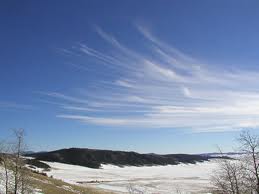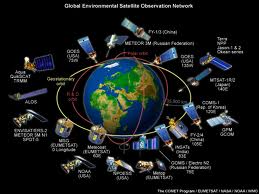When I was a child predicting weather was an art not a science. I loved doing it. I studied all the different types of clouds – cirrus, cirrostratus, stratus, cumulus, cumulonimbus….you name it. I knew which ones forecast rain. I looked at the Sun and Moon every day. A halo meant the air was getting more humid and rain was probably on the way. When I was 13 I became more scientific about my weather predictions when I was given a barometer as a birthday present. I did a daily check of barometric pressure. If it was rising it meant fair weather ahead. If it was falling it meant we would see rain or snow within a day. It usually was right. And it remains with me to this day, some 50 years later.
So let’s see what it is saying about today. Since yesterday it has fallen steadily and this morning’s reading is 29.78 inches (1,008.46 millibars) which according to the guide on its face dial means – unsettled weather. It’s absolutely right because when I look out it’s raining cats and dogs out there. I could have predicted today’s rain the old way by looking at yesterday’s clouds which included mare’s tails in the upper atmosphere followed by cirrostratus and stratus clouds, always a pretty good indicator of coming rain or snow.

But I couldn’t predict what would happen with the weather beyond the day-to-day. That’s where the art of weather prediction came in with forecasters on radio and television making their prognostications that were as often wrong as right, that is, until weather satellites became a fixture of the latter part of the 20th and now the 21st century.
The Coming Crisis in Weather Prediction
Satellites are our eyes on the planet. We use them for short and long-range forecasting. We use other ground-based on atmosphere-based tools as well but satellites make a huge difference. Because of satellite we can receive forecasts that serve to warn us well ahead about impending hurricanes and other severe weather events, and that provide accurate long-term predictions of weather patterns.
Satellites provide 90% of the information that gets crunched by climate modelling computers which give meteorologists the ability to provide uncannily accurate forecasts with few surprises. Satellites measure surface temperatures of the ocean on one side of the planet and predict the warming effect of an El Nino and what it will do to weather patterns thousands of kilometers away. Satellites can watch tropical cyclones over the Atlantic and Pacific and track and measure them as they turn into hurricanes and typhoons. They can monitor the paths of these storms and accurately predict landfall with a very small margin of error. They can see storm cloud patterns that forecast an outbreak of tornadoes so that communities can be warned not a minute before but 5-20 minutes ahead.
So what’s the forecasting crisis I speak of in my blog headline? The current satellites we rely on for giving us a daily picture of our planet and its weather are aging and we are not replacing them when they fail. The American National Academy of Sciences points out that NASA’s Earth Sciences Division is progressively being underfunded and, as a result, Earth-observation satellite launches are declining. The Academy warns that based on current trends we may end up with a global weather prediction data gap of 12 months beginning in 2017. That’s because we will not have a critical replacement satellite in place when another we rely on no longer can function.
Why do satellites fail? We are not talking about the ones that never get to orbit (we had two Earth-observation satellite launch failures in the last year to compound the problem). We are talking about those that are already in space and operating.
- They fail because their instrumentation is subject to extremes of heat and cold in outer space.
- They fail because solar storms disrupt their electronics.
- They fail because space debris strikes them.
- They fail because they run out of the fuel that keeps them oriented to view and communicate with the Earth below.
- And they fail because their solar arrays and batteries degrade over time.
That’s why replacing them isn’t an option but a necessity. Currently planned satellite launches for 2012 number 23. But by 2020 there are only 6 planned launches on the books. That means Earth-observation satellites in space will decline from the 90 we have today to 20 by 2020.
Going blind about the weather because we choose not to make this necessary investment is just plain dumb.








